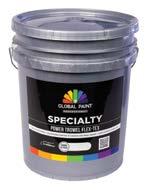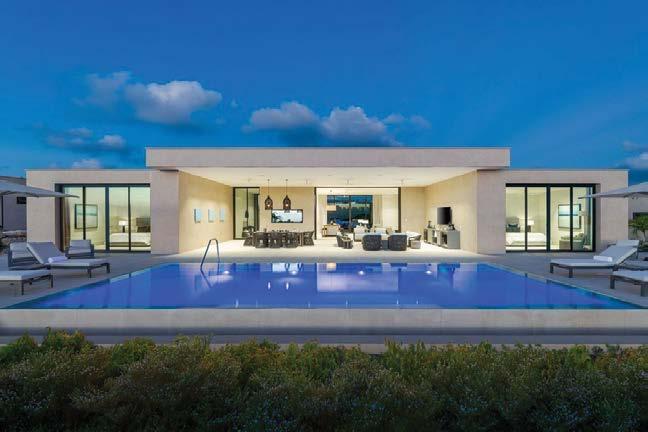
Designed to change your point of view
















Designed to change your point of view















GROUP CEO
Noel Wood
HEAD OF ADVERTISING - NATION GROUP
Paulette Jones
CIRCULATION MANAGER
Adrian Bowen – Tel.: (246) 430-5500 email: adrianbowen@nationnews.com
MAGAZINE COORDINATOR
Julia S. Haynes - Tel.: (246) 467-2896 email: juliahaynes@nationnews.com
WRITERS
Dominique Toppin, Dwayne Gibbs, Nick Nunes, Nakiah Thomas-Edwards
PHOTOGRAPHY
Cover – No 12 The Palms, Lower Estate, St George, Photography by Leslie St John •BRC •Realtors Limited •Platinum Imports
DESIGN/LAYOUT: Brian O’Neale
ADVERTISING EXECUTIVES:
Debbie Brathwaite – Tel.: (246) 430-5518
Email: debbiebrathwaite@nationnews.com
Donna Francis – Tel.: 246 467-2868
Email: donnafrancis@nationnews.com
INDEX PAGE ADVERTISING EXECUTIVE
Alison Licorish – Tel.: (246) 430-5552
Email: alisonlicorish@nationnews.com
ADVERTISING COORDINATOR
Wendey Delaney – Tel.: (246) 430-5517
email: wendeydelaney@nationnews.com
So, you find yourself sitting in the living room - elbows on your knees and head in your hands – wondering what to do. Yup, you have a problem. A too-muchto-choose-from problem.
As a new homeowner (congrats) or one who now has to figure out how to make improvements (smart thinking!), you will need help. Relax! Help is here. Your gaze automatically shifts to the opening that lights up the room. Not much attention is normally paid to windows, but what hits you is their importance, not to mention how integral they are to the overall design of the house. Fact: architects and designers are increasingly building floor plans that orient key rooms to harness views, track the sun and work with the rhythms of the day. Meaning that a strategically placed picture window can turn a humble hallway into a gallery, and a well-aligned kitchen window can make washing up a moment of calm rather than a chore. Bet you’ll never look at windows the same way again!
Artificial lighting is crucial too. Done right, one can refer to it as mood lighting, which gives your choice of lamps, ceiling and hallway lights more scientific appeal. So, you’re not just flipping a switch, you’re changing the mood!
A slow, methodical turn of your head raises your awareness of furnishings. Do they complement each other? Do the colours match? Are they creating clutter? Is there room for more? Are they modern or trendy? Our analysis of Trendy vs Vintage and When Less Is More easily answers those questions. Not only about that room, but every other space in the house.
Get up, look through the window and take an overview of the neighbourhood. These days, housing developments include more aesthetics, even some you don’t consider at first blush. There are upscale and gated communities that include well-manicured lawns, children’s play areas, laundry facilities and restaurants! Open your mind to all the possibilities as you peruse Explore the Evolving Landscape of Living in Barbados.
As the sun warms your face and hands, give some thought to how important cooling is. Again, windows take focus, as well as doors, awnings, screens, curtains and airconditioning. And shade trees! Conversely, what happens when the weather gets unfriendly? Good thing we’re examining how to build cool and weather-resistant homes as well.
A look at your front yard reveals your beautifully decorated walkway. Is it too much? If so, how else will you be the envy of neighbours, visitors, even passers-by? Aha! Learn the art of curb appeal; we have a feature that can help.
Now sit back down, and this time reach for this month’s issue of Smart Homes. Bask in the knowledge that the help you need is in your hands. All you need to do is read and turn the pages.
Smart Homes is produced by The Nation Publishing Co. Limited, a subsidiary of The Nation Corporation, which is a member of the One Caribbean Media Limited (OCM) group of companies. For general info email: smarthomes@nationnewscom. Every effort has been made to ensure that the information contained within this magazine is accurate; however, The Nation Publishing Co. Limited cannot be held responsible for any consequences that may arise from any errors or omissions. This publication cannot be copied in whole or in part without the explicit permission of the Publisher. ©2024 NATION PUBLISHING CO. LIMITED

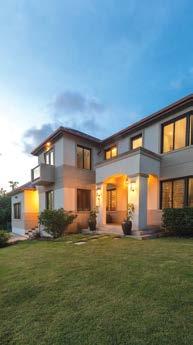
From Dreaming to Dwelling
Owning Your First Home
Sleek lines meet Timeless Charm
When Less is More in Living
Exploring our Evolving Living Landscape
Feeling Fresh with Every Breath
Safety in mind
Intelligent Audio Design
Set the Mood with Lighting
Ask the Security Expert
The striking cover shot for the Smart Homes Magazine captures a modern two-storey home located at No. 12 The Palms, Lower Estate, St George, and puts the spotlight on its bold, rectangular windows, which are clean-lined, generous in scale and almost impossible to ignore. Designed by Dusor Chartered Architects Inc., the windows act as an anchor to the home’s modern design, drawing your eye to the sharp geometry and crisp detailing that define the space. This is a home with Windows that Wow!



by Nakiah Thomas-Edwards
Owning a home is a major milestone—one that brings pride, stability, and long-term financial value. For Barbados and Caribbean people, navigating the path to homeownership can be complex. But with the right strategies, you can move from dreaming about your own home to confidently managing it.
Here’s a guide to clever homeownership practices for every stage—from saving for a down payment to budgeting for home improvements.
1. Saving for a Down Payment: Start Smart, Start Early
Know Your Target:
First, determine how much you need. In most Caribbean countries, a down payment ranges from 10% to 20% of the home’s purchase price. So, for a $500,000 home, you may
need between $50,000 and $100,000.
Set up a Dedicated Savings Account: Open a separate account solely for your down payment. Treat it like a non-negotiable bill. Automate transfers if possible so saving becomes a habit, not a hassle.
Tap into Local Savings Schemes: Use local tools like partner (sou-sou) savings groups, credit unions, or special homeownership savings accounts that offer incentives or better interest rates than commercial banks.
Cut Unnecessary Expenses: Track your monthly spending and identify areas to trim—frequent takeout, impulse purchases, or unused subscriptions. Every dollar saved is a dollar closer to your goal.
Consider Side Hustles: Whether it’s baking, tutoring, or online
freelancing, the extra income from a side hustle can accelerate your savings.
2. Buying the House: Navigate with Care
Get Pre-Approved: Before house-hunting, speak with lenders or credit unions to get pre-approved. This shows sellers you’re serious and helps you know your budget.
Understand the Full Costs:
Beyond the house price, factor in legal fees, valuation reports, stamp duties, insurance, and moving costs. These extras can add up quickly—sometimes 5%–10% of the home’s value.
Work with a Trusted Real Estate Agent:
Find someone familiar with your chosen area. Local agents can help you spot great deals and avoid overpriced properties or problematic locations.

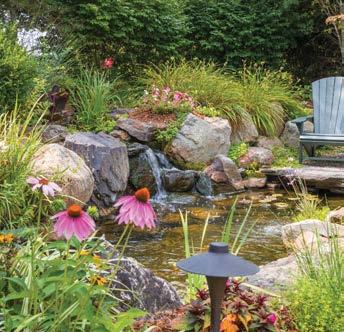
Some tasks – painting, landscaping, minor repairs – can be done yourself to save money.
Inspect Thoroughly:
Hire a qualified inspector to assess structural integrity, plumbing, roofing, and electrical systems. Many Caribbean homes face wear from hurricanes, floods, or termites – better to catch issues early than pay later.
Negotiate Wisely:
Prices aren’t always set in stone. Use inspection results and market comparisons to negotiate a fair price.
3. Stay Ahead of the Costs
Track Monthly Expenses:
Create a budget that includes your mortgage, utilities, property taxes, insurance, and maintenance. A good rule of thumb is to keep housing costs under 30% of your monthly income.
Build an Emergency Fund: Homeownership comes with
surprises – a leaky roof, broken AC, or burst pipe. Having at least three to six months of expenses saved will give you peace of mind.
Be Energy Smart: Electricity bills in the Caribbean can be high. Invest in energy-efficient appliances, LED bulbs, and solar water heaters where possible. Use natural ventilation during cooler hours instead of air conditioning.
Water-Saving Measures: Install low-flow faucets and showers, fix leaks quickly, and consider rainwater harvesting systems to reduce water bills and prepare for dry spells.
4. Upgrade with a purpose:
When you reach that stage of being a homeowner with a young family or have become a mature homeowner, there may be some upgrades you want to undertake. It may be
additions, renovations, or upgrades to worn parts. Here are some things to consider.
Buy Materials Wisely:
Shop around for deals on building materials. Consider purchasing during sales or from surplus suppliers. In some cases, it’s cheaper to buy certain items overseas and ship them in.
DIY When Possible:
Some tasks – painting, landscaping, minor repairs – can be done yourself to save money. YouTube and online forums are great for learning new skills.
Prioritise Projects:
Not every improvement must happen at once. Focus first on urgent repairs (like leaks or faulty wiring), then move on to projects that add value – like kitchen upgrades, bathroom renovations, or adding a rental unit.










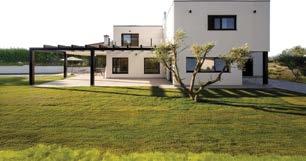
by Dwayne Gibbs

There is no shame in assuming certain things within the household were always there, because you may have had no prior experience buying them. In my humble opinion, taking something for granted is more a case of expectation than a lack of appreciation. You expect your car to start when you swing the key or press that button, the same way you expect water to flow when you engage the faucet.
As a person who recently moved into a new unfurnished apartment, I was given a rude awakening as it pertains to making a rented space somewhat liveable. Now, as a man, admittedly, I am not the pickiest of people when it comes to decor. As a matter of fact, the decision to take the place was made
in less time than it took me to drive there. It was a literal case of walking through, looking at the rooms, standing with my hands akimbo in the kitchen area and saying “it looks good, I’ll take it!”. I have taken longer to decide if I wanted Hawaiian or garlic sauce with my tenders.
My task is to enlighten you, dear reader, on what you can expect when moving into a new living space with no furniture, virtually no appliances and a few utensils. A friend of mine who had been through the experience before told me a refrigerator and a bed were the minimum requirements to at least sleep in your new space on the first night. Now, of course, a bed can be manoeuvred around and replaced by a sleeping bag and a pillow, but I will agree that it should be the first
purchase. The good news is that we live in a time of interconnectedness where we can join various groups on Facebook and look for almost anything for our homes.
Now, on the topic of things that we easily “take for granted”, it’s always little things that make life in your new space a tad more annoying. Let’s start with the bathroom, a toothbrush holder, a soap dish, bath mats, and shower curtains do wonders to keep annoyance minimal. A small trash can is always a plus in any room as well. Now, if there is no compartment in the wall to accommodate said soap dish, a shower caddy is a must as it can accommodate shampoo, conditioner and other products.
Now, the kitchen is where I experienced the bulk of my annoyance. I would strongly


My task is to enlighten you, dear reader, on what you can expect when moving into a new living space with no furniture.

recommend making a garbage bin with garbage bags a priority purchase. Other necessities are a kitchen towel for hand drying, a dustpan and broom for sweeping up crumbs and other particles, dish soap, dish sponges (with the coarse side for scrubbing pots and pans), and a dish rack. I had no dish rack for my first week and had to dry each plate and utensil I used before putting them back into their respective cupboards and drawers. ÷ÆAdmittedly, it is its own form of discipline, but it ultimately isn’t sustainable. Now, of course, Gladware or Pyrex — if you are plastic averse — make the storage of leftovers much easier, but foil and food bags will always do the trick if money is tight. I can personally testify that when all of the aforementioned are secured, you will begin to
feel more relaxed anytime you go to prepare a meal.
I am quite comfortable standing and eating from many years of attending cocktail functions and eating finger foods, but I will admit that not having a table to dine at after preparing a tasty dish using a hot plate in place of a stove was troublesome. I ended up sitting on the two-seater couch and balancing the plate on my knees, so you can be assured a coffee table will be my next purchase.
Now I was given a starter list by an experienced homeowner that I feel I should share. It comprises appliances and general household items, so if you have secured everything on this list, then you are well on your way to comfortable and even enjoyable living.
A refrigerator, stove, kettle, toaster/toaster
oven, microwave, microwave food cover, blender, cutlery tray, dinner plates, salad plates, bowls, tea cups, juice glasses, coffee maker, knife set, cutlery, bottle opener, vegetable peeler, measuring spoon, colander, drink pitcher, wine glasses, saucepans (varying sizes), food containers, mixing bowl, spice jars and rack, garbage can, dish rack, dish sponges dish sponge holder, coasters, scrubbing brush, kitchen towels, bath towels, hand towels, wash cloths, shower curtain, shower curtain liner, bath mats, toilet brush, small trash can, hand soap pump bottle, shower caddy, plunger, laundry basket, clothes hangers, clothes pins, sheets, pillows/pillow cases, curtains, fan, storage bins, shoe rack, air fresheners, cleaning supplies, door/interior mats, important documents folder.







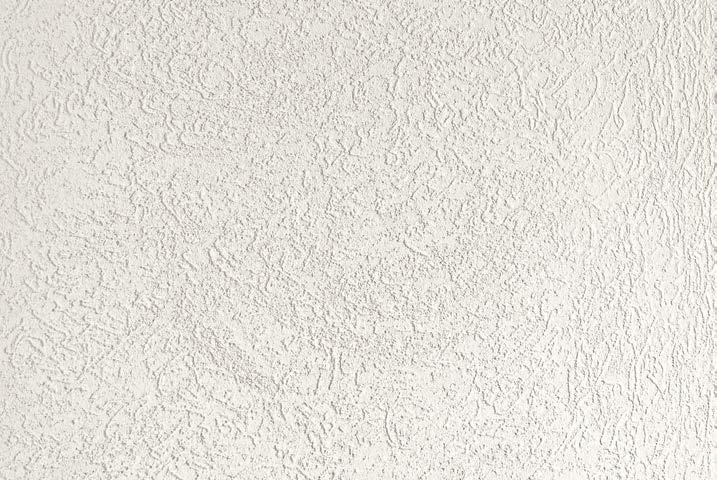

When it comes to home design, the age-old debate between trendy and vintage aesthetics is something every homeowner grapples with at some point. There is something undeniably alluring about the latest trends—the sleek lines, the bold colours and the innovative designs that promise to make your home feel fresh and modern. But then, there is the timeless charm of vintage styles, which evoke a sense of nostalgia and craftsmanship that new pieces often cannot replicate. So, how do you find that delicate balance between what is in vogue and what endures?
The allure of trends is easy to understand. They are everywhere—from social media feeds to interior design magazines, to the homes of the neighbours down the street. Trends can inject a sense of excitement and
modernity into a space, refreshing rooms with a contemporary edge, allowing homeowners to feel like their home reflects the very latest in design and technology, often using the latest colours, textures, and innovations to create a dynamic environment. However, the question many ask is whether this style will stand the test of time or end up looking tired a few years down the line. This is where the beauty of vintage elements comes into play.
Vintage design does not adhere to the fickle whims of current trends. It is more about character, craftsmanship and the stories each piece tells. Vintage furniture, whether it is a mid-century modern chair, a reclaimed wooden sideboard or a retro wallpaper pattern, brings with it a sense of history. It is this timeless quality that many find so appealing.
Vintage pieces can also bring a sense of warmth and soul to a space in a way that
brand-new items sometimes cannot. There’s something special about the patina of a wellloved antique or the texture of a retro lamp that has seen decades of family dinners and late-night conversations. These elements can evoke emotions and memories, adding depth and personality to your home that trends, often focused on surface-level aesthetics, might miss. And then, of course, there is the added benefit of sustainability. By investing in vintage furniture or decor, you are not just bringing character into your space but also contributing to a more sustainable, ecofriendly lifestyle by reusing and recycling. However, many of us know it is not as simple as choosing one over the other. The key to creating a truly unique, harmonious home lies in blending the two—mixing trendy designs with vintage finds to create a space that feels both fresh and rooted in history. Think of it as a curated conversation between

old and new, where modern furniture or art is perfectly complemented by a vintage rug or a retro light fixture. It is all about contrast, balance and knowing how to layer these elements without overwhelming the space. A sleek, modern sofa paired with an antique wooden coffee table, for example, can make the contemporary piece feel even more striking, while the vintage piece gains new life and relevance.
This fusion of trends and vintage can also reflect a more personal connection to design. Whereas trends often come with a set of rules— like specific colours, patterns, or materials—vintage pieces allow you to inject individuality into the space. They can be a reflection of your personality, your travels or your family’s history. A vintage lamp, for instance, might remind you of your childhood home or a piece of furniture passed down from a grandparent can be an emotional touchstone, giving your home a sense of continuity and connection to the past.
The blending of trendy and vintage is far from a one-size-fits-all approach. It allows for flexibility and experimentation, with room for personal taste and creativity. You might opt for a vintage armchair upholstered in a trendy, bold fabric or a retro print on a wall while the rest of the room follows a sleek, modern aesthetic. But it is important to highlight that there is no right or wrong way to blend these elements; it is all about creating a space that feels authentic to you. After all, your home should be a reflection of your life, your values and your personality, not just the latest trends that will inevitably fade. In the end, neither trendy nor vintage design is inherently better than the other; it is about how they work together to tell your unique story. The beauty of contemporary trends lies in their ability to evolve with time, while vintage pieces offer a sense of permanence and history. So, by weaving them together thoughtfully, you can create a home that is not only stylish but also rich in character—a home that feels timeless, no matter the era.

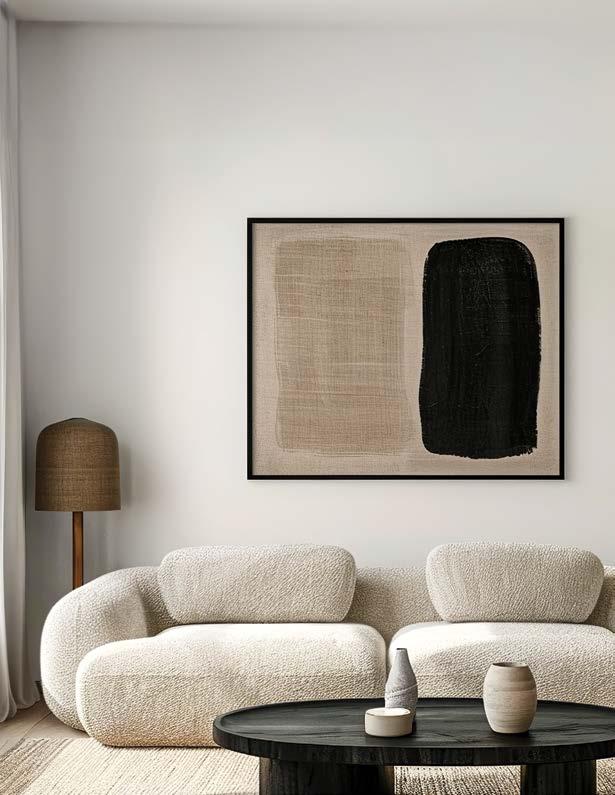
Have you ever wondered how much of your life is defined by the accumulation of things?
From electronics to furniture, and let us not forget the endless collection of ornaments – all things in the home, which over time seem to consume both your space and mind. But what if the secret to a more peaceful, joyful life is not more but less?
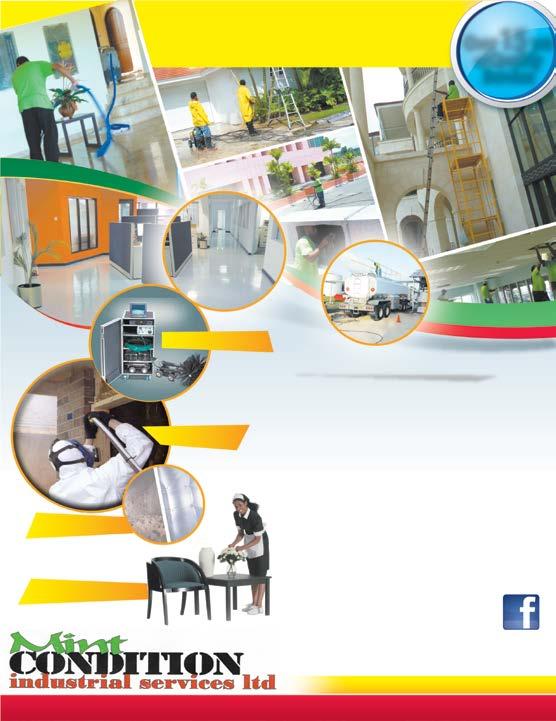
When you embrace minimalist living, you start by letting go of the unnecessary.

There is no doubt that excess is often mistaken for success, but minimalist living is a breath of fresh air and can be defined as a return to simplicity that promises not only to transform your home but also the way you feel in it. Before we go any further, it is important to understand that minimalism is not about deprivation but more about making space for the things that truly matter. The reality is that you do not need a collection of things to make your house a home because there is beauty in shedding the superfluous by creating a living space that feels expansive and calm.
When you embrace minimalist living, you start by letting go of the unnecessary. A room crowded with furniture, décor, and trinkets can be overwhelming by cluttering the space and even your thoughts. The first step is to take stock of what you own and ask yourself, “Does this bring me joy or serve a purpose?” If the answer is no, it might be time to say goodbye. However, this advice should not be viewed as a rushed way to throw everything out, but more as a mindful process of curating your possessions and keeping only those that contribute to your well-being or have sentimental value. Now, just imagine the feeling of waking up in a space where every item has a functional purpose yet is beautiful in simplicity. From the clean lines of a well-chosen sofa, a single piece of art, the warmth of natural wood in a dining table or even the comfort of a soft throw pillow, these pieces can all add character and style without clutter. One of the most striking benefits of minimalist living is how it influences your mental state. A cluttered home often leads to a cluttered mind, which creates an environment where it is difficult to relax or concentrate. However, by reducing the number of things around you, you naturally create more space for clarity and peace. In addition to physical space, there is also that offload of emotional space to simply relax and breathe because we all know the stress of constantly cleaning, tidying and managing an overload of belongings.
Another fact about minimalism at home is that the habit encourages you to make more intentional choices when it comes to new purchases. This means choosing every item with care, which ultimately results in you becoming more discerning about what you bring into your life. This mindful approach, in a sense, when it comes to home design, can also lead to better quality possessions that are versatile and genuinely enhance your lifestyle.
Minimalist living is about cultivating a sense of freedom rather than cutting back on what you own. It means less clutter and more room for things that truly bring joy. So, for potential homeowners or current homeowners, attempt to embrace minimalism. This can mean rather than looking for the biggest or most ornate home, you might find yourself drawn to smaller, more thoughtfully designed spaces rich in character and light, rather than excess.
At its core, minimalist living is about intentionality. It is more about choosing what is meaningful, what brings you happiness and what truly serves your needs. It is also a reminder that life is not about the things we own but about the experiences and peace we cultivate in our own homes. So, why not take a step forward to a simpler, more fulfilling life and start by asking yourself: What if less is actually more?
































Over the past 25 years, Barbados has witnessed a transformative shift in its residential development landscape. From luxurious golf estates and serene marina communities to thoughtfully designed affordable housing and eco-conscious living, the island now offers a broad spectrum of living options. Whether you’re a retiree seeking wellness amenities, a young family looking for convenience, or an investor in search of prestige properties, Barbados has a community tailored for your lifestyle.
The concept of planned communities began gaining ground in Barbados during the mid-1990s, introducing a lifestyle-oriented approach to housing. Pioneers such as Royal Westmoreland (1995), Port St. Charles (1996), and Sugar Hill (late 1990s) set the tone with gated estates offering elite amenities like golf courses, private yacht access, and tennis clubs. These developments paved the way for subsequent themed communities like Apes Hill Club, with its ecoconscious design and sporting focus, and The Estates at St George, catering to active adults with a wellness-driven environment.
In the south and southeast of the island, we’ve seen the growth of affordable and mid-range communities. The Villages at Coverley, launched in 2009 in Christ Church, has become a model for master-planned living. With integrated amenities including a supermarket, gym, medical centre, and dining, it reflects a new standard of convenience. The project emphasises community, sustainability, and affordability, catering to first-time homeowners and growing families. Nearby, South View, developed by the National Housing Corporation (NHC), targets first-time buyers with affordable yet stylish
homes. Boarded Hall Green in St George offers eco-conscious apartments and townhouses in a gated community. Durants Fairways, also in Christ Church, is popular among golf lovers, featuring homes near the Barbados Golf Club. Newton Terrace delivers modern single-family homes for those seeking a quiet, residential environment.
The West Coast, popularly known as ‘the platinum coast’, remains the heart of luxury real estate in Barbados. Royal Westmoreland is the quintessential example, with its championship golf course, elegant villas, and sweeping coastal views. Apes Hill Club extends the appeal with its nature-forward planning and emphasis on wellness and sustainability.
Port St. Charles and Port Ferdinand, both in St Peter, offer marinafront residences ideal for boating enthusiasts, with yacht berths and luxury waterfront amenities. Sugar Hill Estate blends sport and sophistication with its tennis facilities, while Sandy Lane Estates continues to evolve with new upscale offerings, reinforcing its position as one of the island’s most prestigious addresses.
Barbados’ central parishes, such as St George and St Philip, offer peaceful alternatives to coastal living. Developments like Ridge Meadows and Ridgelands feature scenic countryside views, modern homes, and amenities like green parks, sports courts, and clubhouses—perfect for families and retirees seeking tranquillity without sacrificing convenience.
Fort George Heights in St Michael and Fortress Hill in St Philip add upmarket and middle-income options, respectively, to the island’s real estate mix. The NHC has also played a key role in expanding affordable housing through projects in Hopewell, Chancery Lane, and Parish Land.




The Villages at Coverley, launched in 2009 in Christ Church, have become a model for master-planned living.
The 2020s have brought fresh, innovative ideas to Barbadian housing through new developments and future concepts.
The Grove at Farm Road in St Peter and Welches Grove in St Thomas cater to young professionals and modern families with boutique-style, contemporary homes. The Palisades in Enterprise offers sleek villas just steps from the beach.
A particularly visionary initiative is the LIVE Concept—short for Lea, Ivy, Vista, and Eden—focusing on wellness, community, and sustainability. With its roots in the Ridgelands development, LIVE emphasises balance between design, lifestyle, and environment. Residents benefit from features such as a 15acre park, bike trails, and access to outdoor fitness facilities, combining country living with urban convenience.
A common feature across many of these developments is the implementation of covenants—rules designed to preserve community standards and property values.
Typical covenants include:
Residential Use Only: No commercial activities from home.
Architectural Guidelines: Restrictions on building height, style, and materials.
Maintenance Standards: Requirements to maintain lawns and prevent unsightly conditions.
Pet Policies: Often limited to two small pets per home.
Vehicle Rules: No parking of commercial or derelict vehicles on property.
Fencing Regulations: Height and material restrictions (e.g., no corrugated metal).
Environmental Considerations: Emphasis on green spaces and water conservation.
The Estates at St George is especially rigorous in these standards, reflecting its premium status and wellness orientation. Ridge Meadows, Ridgelands, and LIVE developments incorporate similar principles to ensure a consistent and attractive living environment.
Today, some 58 years after Independence, living in Barbados means much more than just owning a home. It’s about selecting a lifestyle—whether it’s the social buzz of a golf estate, the serenity of countryside views, or the convenience of a selfcontained community. The rise of planned developments, guided by thoughtful covenants and community planning, shows a growing desire for balanced, harmonious living.
As Barbados grows as a republic, these communities represent not only homes but hubs of wellness, sustainability, and connection. Whether you’re a local or international luxury buyer or a first-time homeowner, the island offers a place for you to live, thrive, and belong.









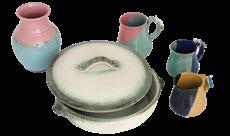

Securing a piece of paradise, as the adage suggests, is an adventure that brings a blend of thrill and apprehension to those who embark on it, owing to the many stages involved, frequently characterised by requirements, bureaucratic hurdles, and substantial documentation. In this context, information is indeed empowering; by adhering to the essential steps in the proper sequence and with the support of a trustworthy lending institution such as Republic Bank (Barbados) Ltd, the journey can be life-changing.
Fortunately, today, Customer Service Managers Nikita Norgrove and Renata Goodman have simplified the mortgage arrangement process, providing a detailed breakdown.
Should you be seeking financing, remember that Republic Bank offers 100% financing up to $600,000, meaning no deposit or down payment is required to acquire your dream home. Of importance to note is that mortgages can feature both fixed and variable interest rates, given their longterm nature.
Clients should investigate their borrowing capacity – this is determined by obtaining a mortgage certificate from your lender, which shows the amount you can borrow based on your income and current debts. It is important to keep in mind that any new financial obligations taken on after receiving this certificate will affect your borrowing limit.
Once you have your mortgage certificate and find a property to buy or build on, you’ll need to return to the bank with specific documents. These include:
• A recent job letter
• A recent pay slip (if paid weekly, pay slips to cover one month)
• Proof of address in the form of a utility bill or other bank statement
• A fixed price contract if you are building to show length of time in stages
• If purchasing a property, a signed offer and acceptance letter must be submitted
• A valuation report from an approved valuer
• A total of all outstanding debts with respective lending institutions
• If self-employed, your financial and income tax statements for three years
• If the mortgage is a joint undertaking, all the above must be provided by all parties
• If constructing, approval from Town and Country Planning is needed
Once the client enters into an agreement with the bank for a mortgage, whether to buy or build, the bank will issue a commitment letter to the borrower, which will detail all pertinent information regarding the mortgage agreement.
When seeking a mortgage for construction, it is crucial for clients to recognise that funds are released in stages. Each stage involves an inspection by a quality surveyor, sanctioned by the bank, who will generate a report detailing the funds utilised and confirming that the project is progressing as planned. This initial phase, known as the bridging phase, requires clients to pay only the interest on the disbursed funds. The entire construction must be completed before the bank transitions your loan from the bridging phase to a standard mortgage. To ensure a seamless experience during the bridging phase and the subsequent shift to mortgage payments, consider these vital tips.
• Typically, construction projects take between nine to 12 months, depending on the complexity and size of the design. The bank releases funds as each construction milestone is achieved, starting from the foundation. This entire period is referred to as the ‘bridging stage.’ After each construction phase, bank representatives conduct inspections to verify completion before further funds are released, with each disbursement referred to as a ‘drawdown’ and accruing interest.
• Additionally, Republic Bank advises borrowers to maintain regular communication with contractors to ensure adherence to the schedule, as delays can reduce the repayment period and increase interest costs.
• Upon completion of construction, a Compliance Certificate from Town and Country Planning is necessary for the bank to confirm that the property was built according to the original plans.
• In order to transition from the bridging phase to a mortgage, it is crucial to acquire this compliance certificate. This certificate is exclusively issued by the Town and Country Planning Department following comprehensive inspections, ensuring that the department is convinced the dwelling has been built according to the required standards.
Whether you’re interested in purchasing, constructing, switching or refinancing your mortgage, the skilled and experienced team at Republic Bank, boasting over 45 years in the industry, is prepared to assist you every step of the way.
For further details, visit our website at www.republicbarbados.com or take a look at our Mortgage Mondays series on YouTube.


by Dominique Toppin

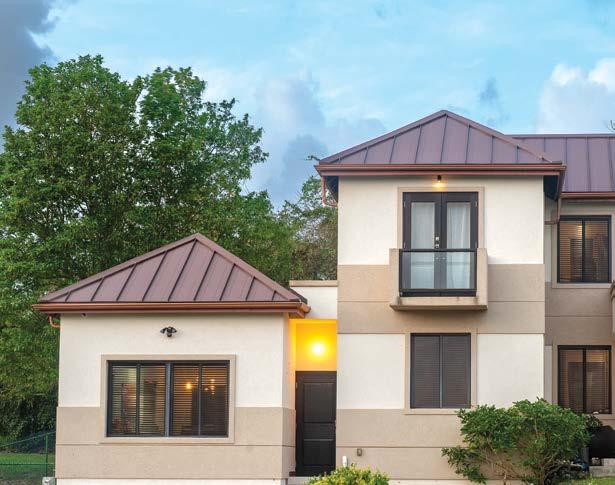
What makes a home truly unforgettable? This is a question many individuals may ask as they prepare to build a house or conduct renovations, and when it comes down to it, it is rarely just the size of the rooms or the paint on the walls. More often, in residential architecture, few elements carry as much quiet power as windows. They are often underestimated, but they are more than functional cut-outs for air and light and can be described as the soul of a home’s design.
Windows are very often treated as background elements, but when chosen thoughtfully and placed with intention, they become bold architectural features that define the character of a space and, in many ways, transform and elevate the overall look. Take floor-to-ceiling windows, for instance. While considered a modern luxury, this choice is a deliberate statement to invite the outside in. So, whether they frame a view of lush green hills, a coastal view or simply a structured city view, these large expanses of glass give a room an entirely different feel.
However, not every showpiece window needs to stretch from floor to ceiling. Sometimes, it is the unexpected that stops you in your tracks – a round window tucked high into a wall, a triangle-shaped frame echoing the lines of a pitched roof, or even a narrow vertical slit offering a perfectly edited glimpse of the landscape. Bay windows have also been a classic move, and for good reason. They are practical and poetic at once, and while they flood interiors with light from multiple angles, they also carve out niches of space that can be used imaginatively, such as a reading nook or simply a place to sit with a morning tea and watch the beauty of nature. It is these sorts of design elements, when thoughtfully chosen, that quietly improve daily life.
A fun architectural fact to note is that some of the most compelling homes are designed around their windows, rather than
treating them as secondary elements. Now, architects and designers are increasingly building floor plans that orient key rooms to harness views, track the sun and work with the rhythms of the day. Meaning that, a strategically placed picture window can turn a humble hallway into a gallery, and a wellaligned kitchen window can make washing up a moment of calm rather than a chore. The truth is, it is about making light part of the architecture and not just an afterthought to be compensated with artificial sources.
There has also been a growing appreciation for windows that do more than just look out, but that create varying moods. Stained or textured glass is one way to add depth and softness to a room, simply because it catches the light in new ways and casts gentle shadows across floors and walls. And the most important part? It does not mean you have to return to heavy Victorian styles,
but rather a subtle, contemporary soft tint, with etched patterns, or sandblasted finishes that offer privacy without sacrificing glow. These are all materials that allow a home to feel layered, sophisticated and, above all, considered.
Your home is your sanctuary, and, in the end, windows play a starring role. They are far more than mere panes of glass as they invite nature inside and serve as a striking centrepiece in every room. This means windows should not simply be viewed as elements of construction but a serious, thoughtful decision, which ultimately will play a part in shaping atmosphere, experience and even emotions at home. They even turn ordinary rooms into extraordinary experiences. So, there is no doubt that while the walls may hold up the house, it is the windows that give it soul and shine as the showpieces they are.
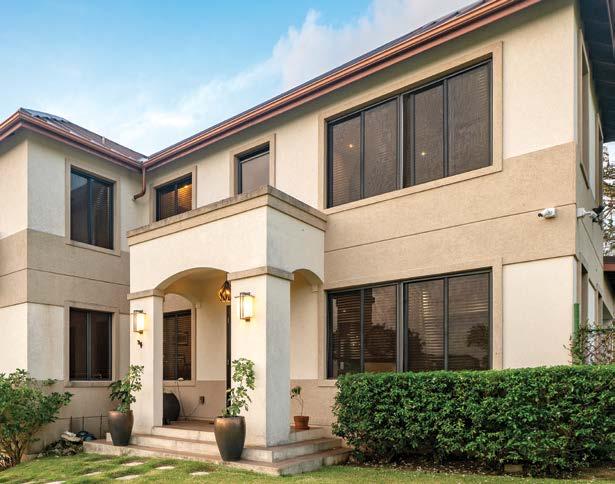
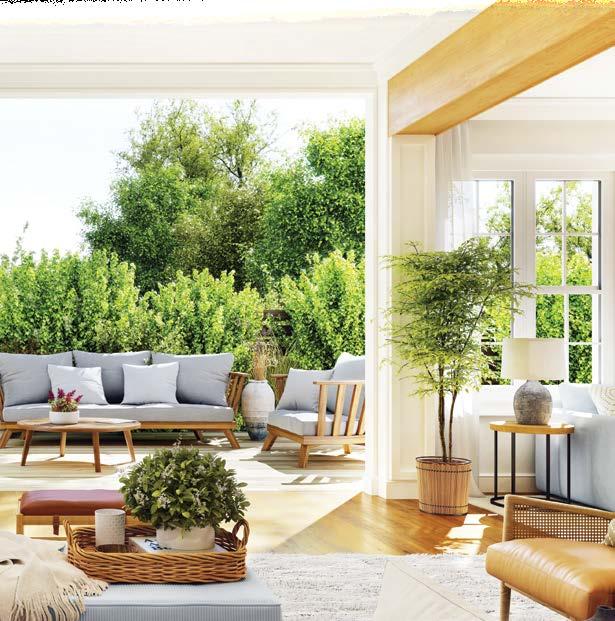

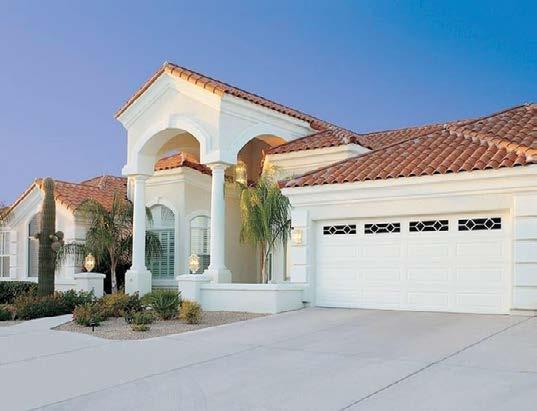




alex@accessallbarbados.com julie@accessallbarbados.com
www.accessallbarbados.com
Good airflow in the home is one of those things you rarely think about until it is gone.
We have had some warm weather recently, and by all reports, it is projected to get worse, which means keeping our homes cool has been a challenge on some days. However, did you know that even before the completion stage, there are things which can be incorporated in the building stage to serve as simple yet effective ways of maintaining a comfortable temperature in your home?
There is something truly magical about creating spaces that feel alive. This means, even before your home is completed, you should be au fait with the planning and designing elements to ensure that it flows and has an inviting feel. Let us not focus on simply building walls, putting up structures and adding furniture, but the priority should be more about curating an atmosphere that works in harmony with daily life. That is why the best homes manage to strike that balance between openness and warmth, comfort and style. The best part about it is that the key to building a ‘cool home’ is embracing the open living concept and mixing materials in ways that bring out the best in each other.
Good airflow in the home is one of those things you rarely think about until it is gone. But the moment you step into a home with proper ventilation, you feel it. However, it is not about forcing air through a space but about designing it so that air can naturally circulate. This means prioritising cross ventilation by strategically placing windows and openings on opposite sides of the house and installing high ceilings for improved ventilation. These arrangements can further be enhanced by large sliding doors or folding glass walls, which let fresh air freely move from one side of the house to the other. The overall result? A home that feels fresh, where each breath is a reminder of how important it is to feel comfortable and at peace in your surroundings.
A ‘cool home’ goes hand in hand with the concept of open living, and it is a design idea that has redefined how we use our homes. Gone are the days of narrow, isolated rooms as today, the heart of the home is its open plan – living rooms that flow into dining areas,





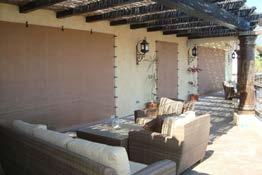






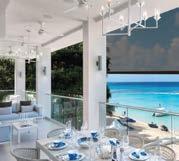





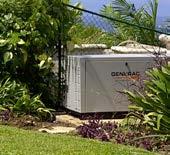
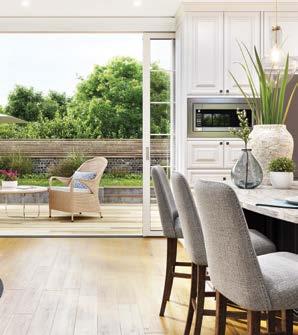
kitchens that connect with lounges and the beauty of it all, is that it opens up a myriad of possibilities for redesign since you are no longer confined to individual rooms but can move through the space with ease, whether you are cooking, entertaining or just unwinding after a long day.
But even with all that openness, a home still needs warmth, and that is where material choices come in. The mixture of wood and walls is one of the most timeless combinations, and what makes this mixture so powerful is its ability to adapt. Wood, whether used in a feature wall, ceiling beams or even smaller accents, provides texture that softens a room, creating warmth without overpowering the space. At the same time, the walls, whether sleek or worn, bring a sense of structure and stability to the overall house plan. Together, they make the space feel like it belongs and work to create a home that is cool yet cosy and comforting.
Building a ‘cool home’ is about creating a space that suits your needs rather than aiming for flashy structures or following trends. It is about creating a space that invites you to relax and breathe easily, and we all know, in the Caribbean, that is a priority given our all-round sunny season. The beauty of it is that building a ‘cool home’ is not a secret because, with good airflow, open spaces and the perfect mix of materials, your home can become a space that feels natural, unforced and, most importantly, comfortable.






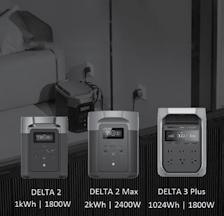


When designing and constructing your home in the modern era, there are many considerations to make with regards to comfort, convenience and, of course, longevity. Naturally, your overall safety and comfort are paramount and modern architecture has been taking unavoidable occurrences such as natural disasters into account based on their devastating effects and the subsequent expense that follows. In the Caribbean, there is no threat of hailstorms or tornadoes, but hurricanes are a perennial threat to people in the region between the months of June and November. Their effects can be utterly catastrophic,
causing extensive property damage and loss of life. Flooding is another form of natural disaster that comes as a direct result of hurricanes, which also brings an endless list of woes to those who are afflicted. With this in mind, modern homes now come with weather-resistant features to help counteract the effects of natural disasters.
Starting from the foundation and moving upward, it is important to ensure the base of your home is well protected, especially from flooding. This can be done through different kinds of foundations, such as slab-on-grade, post and beam and pile, which all have their individual characteristics. Slab-on-grade foundations consist of a single layer of concrete poured onto a pre-existing layer of
gravel to operate as the house’s foundation. This foundation is a great countermeasure against the effects of flooding and is also ideal to discourage termites.
Post and beam foundations involve concrete and rebar posts being drilled into the bedrock of the soil on which the foundation will be laid. Support beams are then placed laterally to support the structure. The benefit here is that the stilted approach can potentially keep the house elevated amid rising flood waters to allow little to no contact with the house. The crawl space provided by the elevation also allows for easy access to electrical and plumbing systems in the event of damage or malfunction. Pile foundations are similar to post and beam
foundations except they use long, thin elements to drill even further into the soil to transfer loads to deeper, stronger areas of bedrock. The benefits derived here are in the form of stability and load-bearing capacity, in addition to adaptability in various soil conditions.
With regard to the actual structure of the home, circular designs have become more popular mainly for functional purposes as they do a much better job of deflecting strong winds around the shape of the house. Gale force winds work against the flat sides of houses to eventually topple them, but the circular-shaped home is the perfect foil. Additional layers of protection against hurricane winds include roll-down hurricane shutters. When activated, the shutters provide additional reinforcement for the house as they neutralise the penetrative effect of strong winds from entering through windows.
Continuing with newer methods of reinforcing houses, Insulated Concrete Forms (ICFs) are becoming more popular due to
the unique concept of placing hollow foam blocks stacked into the shape of the exterior walls of the house with space between to accommodate concrete and rebar. This renders the house virtually immovable, and it has been said that ICF structures can withstand up to category five winds.
Roofing has also undergone significant revision in the world of construction, as we have seen many instances where hurricane winds have lifted entire roofs off houses like they were nothing. Concrete roofs are a popular design choice, whether in the form of one slab or individual concrete tiles, because of the assurance they offer. Another option many new homeowners have been leaning towards is hip roofs, which, unlike gable roofs, are designed with slopes on all four sides which converge at the apex of the house, making it highly wind resistant.
Other areas in home building which have been ramped up significantly with regard to weather safety have been water storage tanks. When the water supply is restricted or completely shut off during a hurricane,
case scenarios, a few weeks. For this reason, many homes are being designed with outdoor water storage systems in place. Whether they are made from polyethene, stainless steel, or concrete, they provide much-needed relief during hurricanes to allow families to still operate as close to regular as possible in the interim. There are even smart water tanks on the market with an accompanying app that allows you to monitor water levels and overall water quality.
Hurricanes and other natural disasters, like occasional earthquakes, are unfortunately unavoidable for us in the Caribbean. The good news is that as technology improves and advancements are made from an architectural and infrastructural perspective, when it comes to our homes, we will be able to better handle these inconveniences as they come. We have already seen considerable progress within the last 40 years when it comes to the structural integrity of our buildings as a whole, and the aim is to continually push the envelope to keep our populations safe.

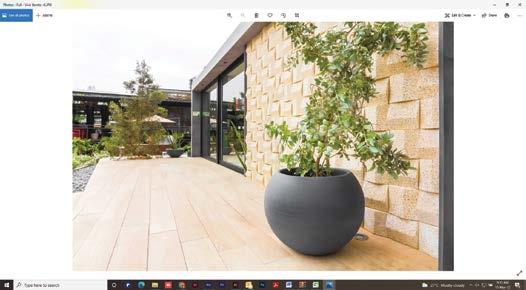

People don’t think about it very often, but we are currently living in the third decade of the 21st century. Think about all the changes that have come with that. Certainly, many of the millennial and older generations remember the loudest sound of the 90s – The THX logo that tested the audio before many of the films of that day.
Thirty years ago, homes were walled with massive sound systems, boom boxes, and radios in multiple rooms. Humanity has always been in love with sounds. From phonographs and record players to the advent of the iPod and all the streaming services and ways you can listen to audiobooks, music, or movies – improvements in the world of sound are always on the market.
You no longer need to be ultra-rich to hotwire your home for convenience and comfort. One of the beautiful ways in which this is a boon for even the most average audiophile – that’s a lover of music – is in intelligent audio design for the home.
The landscape of intelligent audio design for the home is more than just having designated listening spaces for music or movie intake, it reaches into the everyday with personal assistants, home monitoring, and so much more.
Where once people had huge speakers or even small speakers conspicuously wired around a particular room, we now live in the age of the wireless. Products such as Amazon Echo, Google Nest Audio, and Apple HomePod have been on the market for ages
– in the considerably quick-paced realm of technology.
These systems now act as central hubs for managing smart homes, serving as intuitive interfaces for controlling lighting, climate, security systems, and more – all via natural language commands or app-based controls.
The world has become fuller, especially of things unseen. The Internet of Things makes the world seem a little smaller, what with all the connectivity offered at just a few clicks of a smartphone or even a simple question asked of all the assistants available on our smart devices.
Voice Assistant integration from AIpowered software such as Amazon’s Alexa, Google’s Assistant or their new Gemini, Apple’s Siri, Samsung’s Bixby, and probably



a myriad of other less-known brands, offers hands-free control of so many aspects of daily life. These assistants enable users to play music, check the weather, set reminders, order groceries, take dictation, and generally keep order in a chaotic world.
Keeping this smart home revolution seamless are multi-room audio systems that don’t require a wired connection. Sonos, Bose, Apple AirPlay, Google Home, Amazon Echo – all these companies offer inconspicuous devices that can be hidden in each room and still connected to your cloudbased requirements and keep you abreast of the important things in your life.
One of the newer features of these amazing devices is in the realm of adaptive sound tuning. Smart speakers often include features like room calibration and adaptive sound, which automatically adjust audio output based on the room’s acoustics for optimal clarity and balance. Think about how different your music sounds when sitting in the throne room and scrolling on your phone. Or for those who love a backup chorus while singing in the shower, having
speaker systems that calibrate how you hear can be a great game-changer for some.
The integration and compatibility of these devices is unprecedented. If they don’t support all the major services like Spotify, Apple Music, Amazon Music, Tidal, YouTube, Audible, et al, then there’s no room for them on the market. Going back to the room calibration, you don’t want to fall asleep to an audiobook at the same volume or intensity with which you would be listening to a recipe blog in the kitchen while cooking up a storm.
These devices are made to create an invisible web that you can choose to weave throughout the parts of your life that best work for you. Your home’s climate control, lights, doorbells, security cameras, pet monitoring systems, or even kitchen appliances like slow cookers can all be controlled through audio products of the now, while, in most cases, keeping you energy efficient.
From sound bars for entertainment to innocuous hands-free device control throughout the home, there are audio
products for every type of user. Today’s audio products are made to elevate experiences. Whether you’re a cinephile, a serious gamer, or a parent who needs to be able to control things hands-free, integrating your home with audio efficiency is the way to go.
The future of in-home audio products is also moving towards a more intuitive age. Especially for those of the Caribbean –getting mostly American-based software to understand dialect has been a frustrating bit of gum in the works of what should be fluid advancement. Advances in natural language processing will make interactions feel even more conversational and context-aware. The ability for AI to learn your voice and your particularly unique inflections could even aid in security, preventing just anyone from commanding your personal assistant.
Home audio has come a long way, and there are always new horizons in the world of tech advancement. The future is only beset by the imaginings of the now. The avid audiophile has a lot to look forward to in the coming years.


They say manners maketh man, and if that is the case, moods maketh moments. What helps to accentuate any mood you are going for is how the room or space you are targeting is lit. When it comes to lighting rooms, the three main forms of lighting are ambient, task and accent. Ambient lighting, also known as general lighting, is where light is diffused evenly throughout a room to provide a soft, even touch, resulting in a calming effect on its subjects. Common sources of ambient light are ceiling lights, wall sconces or floor lamps.
Task lighting differs from ambient lighting due to its focus on the illumination of specific areas in a room, for example, in a kitchen where extra focus may need to be placed on the stove area to optimise visibility. With a more acute focus, task lighting is good for highlighting as it provides brighter, more directed light than ambient lighting.












One-coat Application
BERGER Flexi Trowel is a premium ELASTOMERIC trowel finish with superior permanent flexibility. It is available in Coral Stone, White and tintable to any colour.
BERGER Flexi Trowel has great adhesion , longterm durability and comes with a ten-year warranty. • Interior & Exterior
Grades Available:

Accent lighting is task lighting’s more intense cousin, if that analogy helps, as it is used to draw attention to a particular subject or object in the case of museums, car dealerships and appliances in showrooms and department stores. It is important to note that accent lighting creates a contrast between the subject and its surrounding area.
Mood lighting is its own science, and it comes down to the desired intention behind the chosen method of lighting an area or space, regardless of size. Within the home, ambient lighting is largely used because of its evenness, which lends to more consistency when experimenting with various elements. The good news is that task and accent lighting also have their place and can be used in tandem within one space to truly set the mood and tone for a private dinner, a popcorn and movie night or a simple evening of reading a good book with a glass of sauvignon blanc.
The combination of ambient, task and accent lighting is also referred to as layered lighting. The aim for any room is to have a dynamic environment that incorporates the different forms of lighting using different placements at different heights. This helps to create a more 3D experience, if you will, as different lighting techniques create varied sensory experiences. If you want to create a more romantic atmosphere for any special occasion or a scheduled date night with the hubby, the recommended approach is to use candles, fairy lights or amber bulbs. For good measure, you can also place LED lighting strips behind furniture to produce a glowing effect, adding another layer of visual presence to the setting.
Apart from creating cosy one-on-one vibes, lighting can also set the tone for a relaxing evening, whether alone or with company. Salt lamps, lava lamps and soft lanterns are all great individual options for such a goal, and where possible, implementing lights with blue and purple hues is extremely effective when it comes to helping the senses relax. In settings that are more industrious, but still allowing for creativity, colours such as pink, blue and teal offer a burst of energy to the space, which typically sets creative minds into gear.
Lighting can make us feel drawn to some spaces with the urge to linger or, equally, repel us. A great lighting scheme presents a healthy balance of light and shadow, and to effectively use the technique of layered lighting in any room, it’s best to start general and then narrow down the specifics. With this in mind, first determine the feel and function you want for your space, then select what type of ambient lighting suits your objective most, keeping in mind that less is more. Of course, task lighting will be used for the spaces that require it before incorporating accent lighting to draw attention where it’s needed most. The final step to complete your visual masterpiece is to decorate it with chandeliers, pendants and lamps to put your own personal stamp on the space.
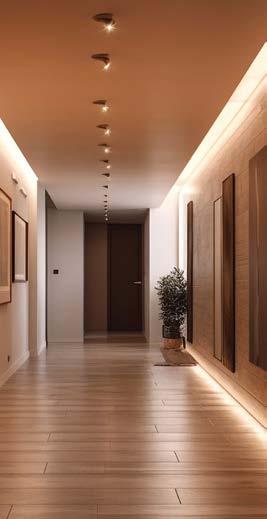
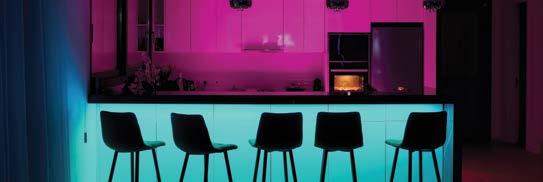



Security is more important than ever in today’s world, and CCTV systems are a critical tool in safeguarding homes and businesses. To help us navigate the complexities of modern security solutions, we sat down with Eoin Clarke, the CEO of Security Cameras Barbados. With years of expertise in surveillance technology, Clarke shared invaluable insights on choosing the right system, and tips to keep your property and family safe. So, whether you are a first-time buyer or looking to upgrade your setup, this Q&A is your go-to guide for all things CCTV Security.
1. What are the most common mistakes people make when installing their own CCTV systems, and how can a professional installer help avoid them?
A major mistake is choosing poor-quality, outdated equipment. Many opt for low-cost systems with poor image quality and unreliable parts, which can fail when needed most. A professional installer can recommend high-quality equipment suited to your needs, ensure proper placement and ensure long-term durability, saving you from future frustration and extra costs.
2. When choosing a CCTV system for home use, what should homeowners look for in terms of camera quality, placement and storage options?
Homeowners should ensure they cover key entry points and the perimeter, avoiding blind spots. For image quality, aim for 5MP–6MP cameras in 2025 or 4K (8MP) for the best resolution. Regarding storage, an NVR (Network Video Recorder) is ideal, allowing continuous recording even during internet outages. Trusted brands like Dahua or Hikvision offer reliable systems with regular app updates.
3. What are some simple yet effective home security upgrades that don’t require a complete overhaul, but can make a noticeable difference in protecting a home?
Small upgrades can significantly improve security:
• Trim hedges to remove hiding spots.

• Keep tools or ladders away from entry points.
• Ensure functional motionsensor lighting.
• Reinforce existing measures like fences, alarms, and security cameras.
• Visible security measures can deter intruders and enhance your system’s overall effectiveness.
4. For homeowners with children or pets, what security measures would you recommend to ensure safety while maintaining a comfortable living environment?
For families, security should balance protection and comfort. They should:
• Install secure fencing to prevent accidental escapes.
• Use child-safe window and door locks.
• Motion-sensor lighting around the yard can enhance security.
• Indoor cameras or baby monitors allow monitoring of children or pets.
• Smart security systems with remote access give parents peace of mind.
These measures ensure children and pets can safely enjoy the home environment.
5. If someone is moving into a new home, what steps should they take to assess and improve the property’s security, especially in areas like entry points and perimeter lighting?
Moving into a new home is a great opportunity to evaluate security such as:
1. Ensuring doors and windows have sturdy locks or upgrading to high-security deadbolts or smart locks.
2. Trimming bushes and trees near windows and reinforcing fences and gates.
3. Installing motion-sensor lights and ensure existing lights are functional.
4. Setting up CCTV cameras, a monitored alarm system and video doorbells.
5. Changing locks, storing valuables in a safe and building a relationship with neighbours for added security.
By following these steps, new homeowners can create a secure


Before you even get to a person’s front door, sometimes you are given a visual treat in the form of beautifully designed walkways and decorative pavements equipped with lights and other trimmings.
We’ve all had the experience of visiting someone’s house for the first time, and as you walk towards their front door with your bottle of wine in hand, rehearsing your greeting, you can’t help but observe their walkway design. You may not be able to articulate the design type or what materials were used, but you can tell a lot of craftsmanship was put into it.
The purpose of this article is to help you identify some of the more common types of walkways so that the next time you enter someone’s home, you can pay them a compliment and then ask where exactly they
sourced the mulch for their paver walkway. Not only is it a great conversation starter, but you will be invited back to the next house social.
Since paver walkways were mentioned, let’s discuss what they are. Paver walkways are pathways leading to your home created by using individual paving stones. They can consist of concrete, brick, stone and clay and are very useful, especially on rainy days, as they provide relief from otherwise muddy and soggy walking surfaces as you enter or leave your place of abode.
Now, in case your host decides to go a little more in-depth about the walkway process, here’s a little insight into how it all happens. Firstly, the ideal width of a walkway is 48 inches to comfortably accommodate two people walking side by side, but 36 inches is
also widely acceptable. A traditional paver walkway consists of several layers. First, there is a six-inch layer of gravel paver base, then a one-inch layer of sand, followed by the pavers, which are made of stone, brick or clay, with the finishing touch of polymeric sand to fill in the spaces in the pattern. Admittedly, the process of creating a paver walkway is lengthy and laborious, so it may be best to consult a professional.
The process of creating a paver walkway begins with determining the path it will follow from the street to your front door and determining if it will be curved or straight. For the straight path, stakes in the ground utilising string in between are used to ensure the path is straight. With a curved path, two sets of hose are used with plywood between to keep an equal distance throughout before
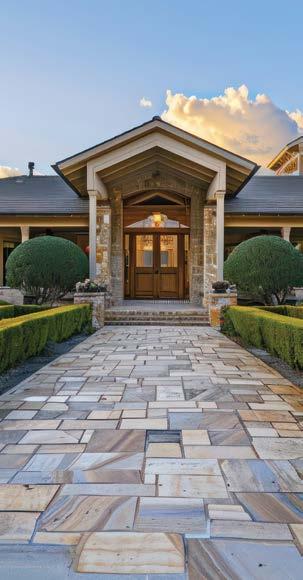
markings are put down using spray paint. Next, the digging process begins with a shallow trench (around six inches) to accommodate the various layers that will be placed down before the stones are added for the final touch. When the trench is successfully dug, the bed is tamped by using a hand tamper or plate compactor to ensure it is level before using a two-by-four wood and a spirit level to be certain. From there, landscape fabric is placed as the first layer before adding a layer of sand on top of it. Landscape fabric is useful in preventing the sprouting of weeds and also helps to prevent flooding. The process continues by using a two-by-four to screed the sand and make it perfectly level. Afterwards, it’s time to install the paver panels, which
are very light and have the consistency of rubbery foam. This makes them easy to cut using a utility knife to fit the shape of the pathway. The edges of the paver panels interlock like a puzzle, so it makes it easier for them to stay in place when laid down.
The next step is another layer of landscaping fabric before another inch of sand, with the final step being the placement of the stones. Flag stones are highly recommended because they are flat on the surface. Some may have to be cut to fit whatever decorative pattern you choose, and this can be done with a masonry blade. When the stones are placed, apply polymeric jointing sand to fill in the spaces between the stones, then give the pathway a thorough sweeping before washing it down with a hose for the finishing touch. The outer perimeter of the walkway can be lined with plants, river rocks, garden gnomes and, of course, garden lights to illuminate the pathway to give that warm, welcoming look and feel.
Other kinds of walkways are natural stone, gravel, mulch, wood, brick and concrete, so it is really up to you to decide what more fits your style and the personality of your home. Now, the next time you are at a house social and the topic of walkways comes up, you can steal the show and impress everyone with your knowledge.
Get everything you need for your DIY, Home Improvement, Repair and woodworking needs
• BESSEY Tools –Unrivalled all-steel quality Ideal clamping tools for wood working
• CMT Orange Tools –thin and full kerf blades
• Live Edge Slabs –affordable prices to build your tables and other exotic furniture pieces.



What does your average day sound like? Do you wake up and listen to the radio while getting ready for work? Do you pump some tunes while working out to sweet beats in the early morning? Is the news playing on the way to work, or maybe some self-help audiobook to try and improve the track of your life?
We all have the sounds that we prefer to listen to, and the way we take in these audio bites can be very personal. Whether you’re a fan of the big boomboxes of the 1980s and 90s, or the big whole ear covering headphones like a record producer, or maybe you’re a fan of the inconspicuous ear buds that have become so commonplace in the 2020s – the world of audio product improvements has something that is sure to pique your interest.
So, what’s on the market for the avid audiophile or the amateur consumer? For the serious audiophile on the go, Bowers & Wilkins offers the PX7 S3 with enhanced comfort, upgraded 40mm biocellulose drivers, and advanced noise-cancelling protection as well as eight integrated microphones. It supports aptX Adaptive and aptX Lossless codecs, ensuring high-resolution audio playback. With a 30hour battery life and USB-C wired listening, it's ideal for audiophiles seeking premium sound quality.
If you’re looking to improve the quality of your at-home entertainment, a sweet soundbar can do just the trick. Sure, if you’re a serious movie buff, you could go the route of installing true surround sound with multiple speakers beside, behind, and in front of the screen and audience area of your viewing gallery. But a top-of-the-line soundbar can eliminate the need to drill holes or find hiding spots for sneaky speakers to be placed in multiple parts of a movie room.
According to Bose, one of the biggest names in available audio accoutrements, their Smart Sound Bar 900 features advanced acoustic technology and built-in voice assistants, while delivering cinematic sound quality. Its adaptive audio technology ensures optimal sound based on content, making it a versatile addition to any home theatre. Hitting the price list at around US$900, this sound bar isn’t for the faint of heart, but it’s also not at the top of the price list.
Samsung’s HW-Q990B races ahead of the pack at double the price. This premium soundbar comes with a wireless subwoofer and rear speakers, supporting Dolby Atmos and DTS:X for an immersive, threedimensional sound. Q-Symphony technology synchronises audio with compatible Samsung TVs for an enhanced experience.
If those all seem a little steep for your taste, sound bars can be bought for under US$100. They might not come with great name brand recognition, but if you’re not willing to spend the money on a proven product, then the next best thing won’t be much of a disappointment. Even Bose has $200 sound bars on the market that might be better than going as low as possible and compromising the quality of the sound you’ll receive.
Regardless of the level of investment you’re willing to make in your audio accessories, there are products on the market waiting to improve the way you hear the world around you.
























